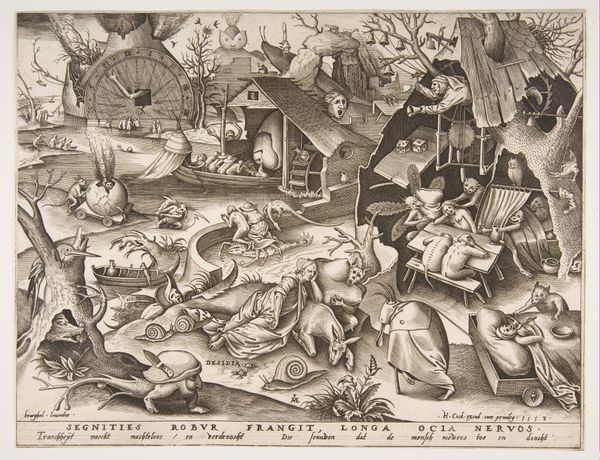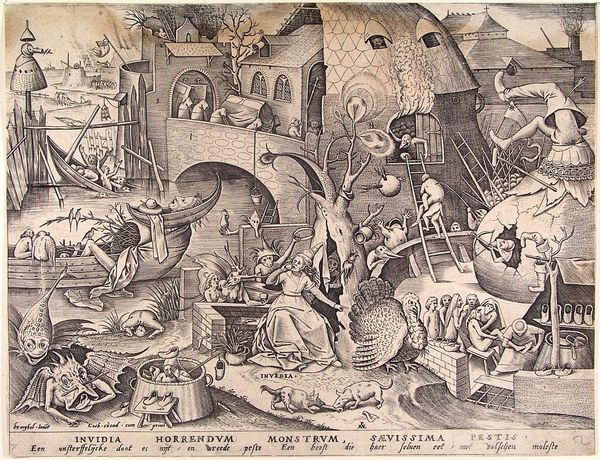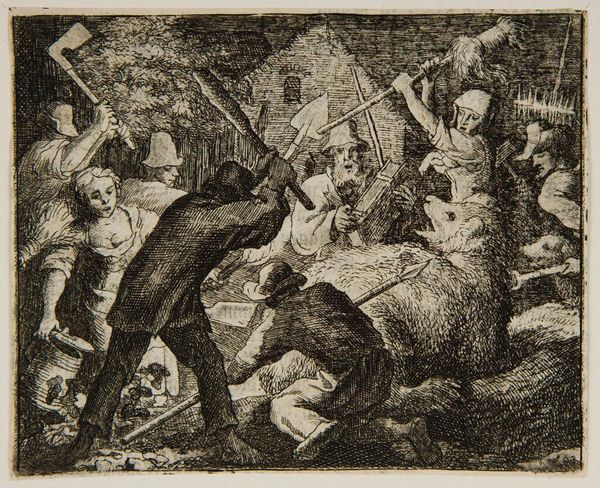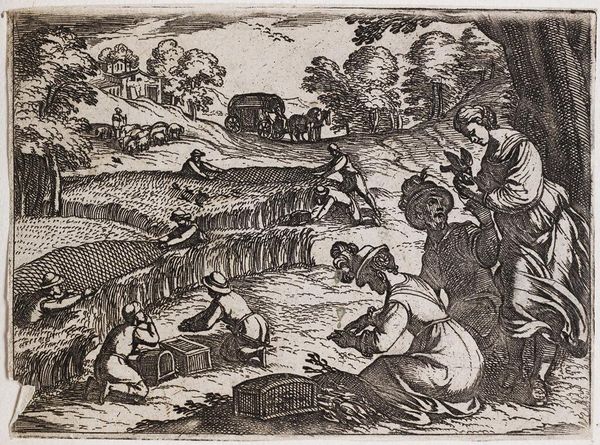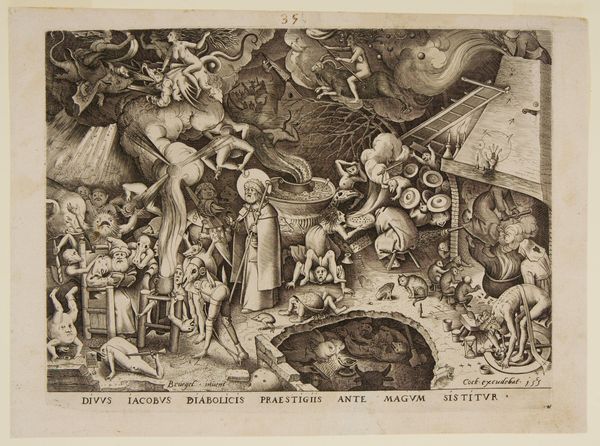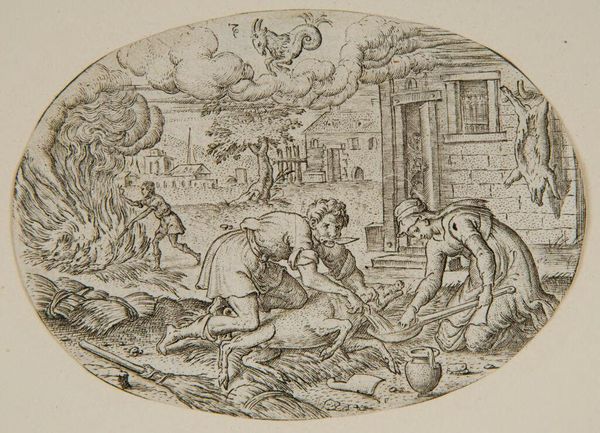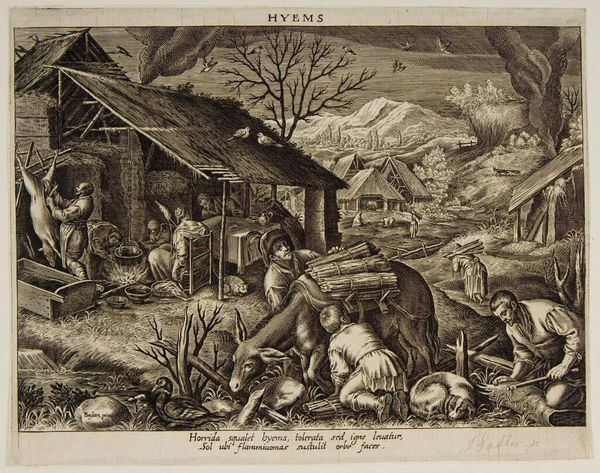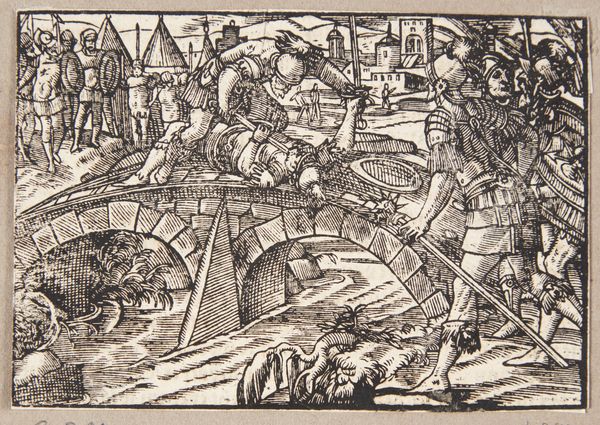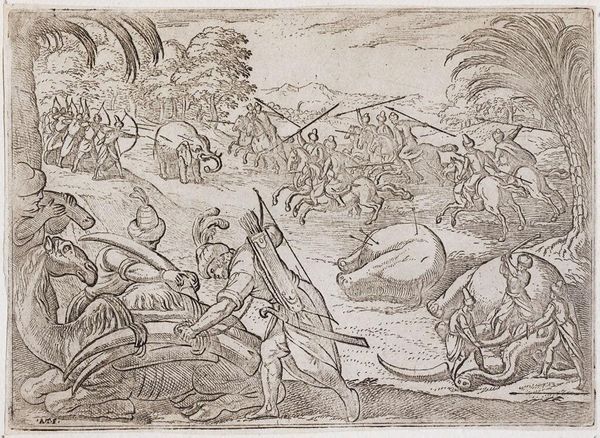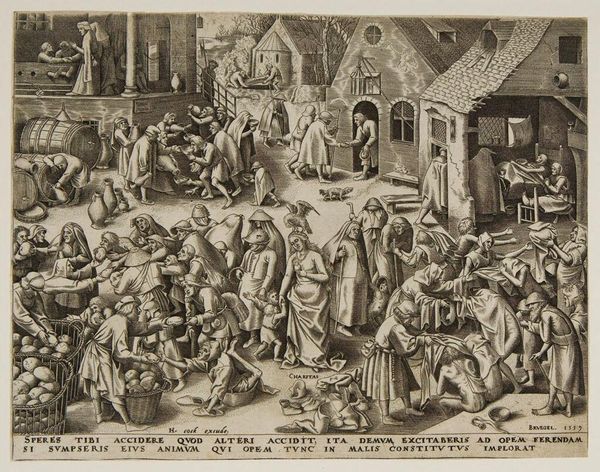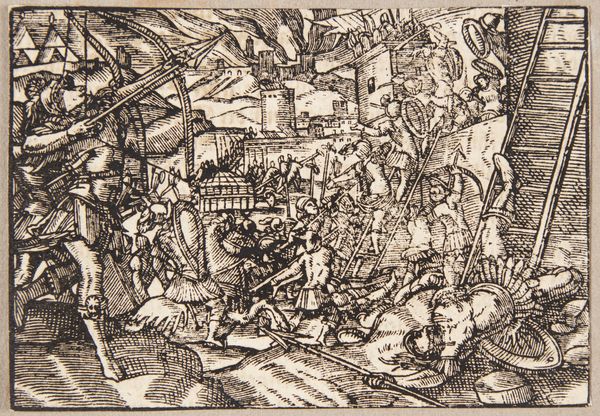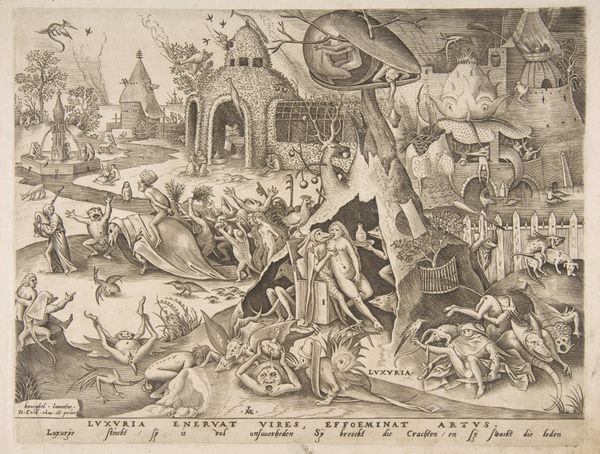
drawing, etching, ink
#
drawing
#
allegories
#
ink drawing
#
allegory
#
narrative-art
#
pen sketch
#
etching
#
figuration
#
ink
#
line
#
genre-painting
#
northern-renaissance
Copyright: Public domain
This print called ‘Laziness’ was made by Pieter Bruegel the Elder in the mid-16th century. Bruegel was working in a Northern European tradition of detailed prints and paintings, often filled with allegorical figures and proverbs meant to teach moral lessons. In this image, we see a chaotic scene of figures succumbing to sloth, one of the seven deadly sins in Christian doctrine. The composition is full of visual metaphors, reflecting the culture of religious instruction at the time. Look at the snail, an emblem of slowness and inactivity, and the figures drowsing, gambling, and feasting. Bruegel critiques social mores through these kinds of satirical images. His work gives us a glimpse into the anxieties around vice and virtue in 16th-century society. Understanding Bruegel's world means looking into the religious, economic, and social structures of the Netherlands during this period. Art historians can use texts, sermons, and other visual sources to reconstruct the worldview that Bruegel was both a part of and commenting on.
Comments
No comments
Be the first to comment and join the conversation on the ultimate creative platform.

